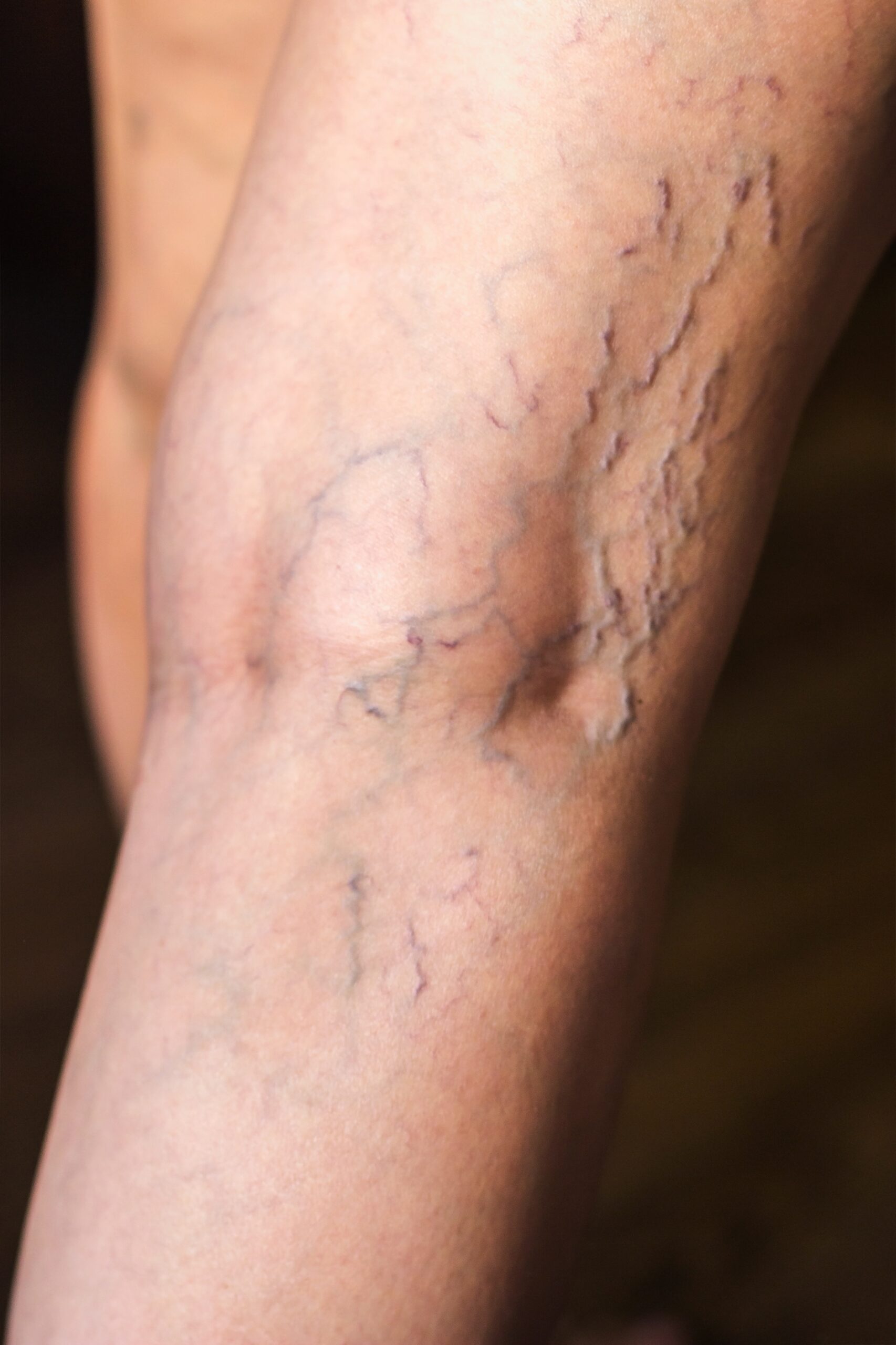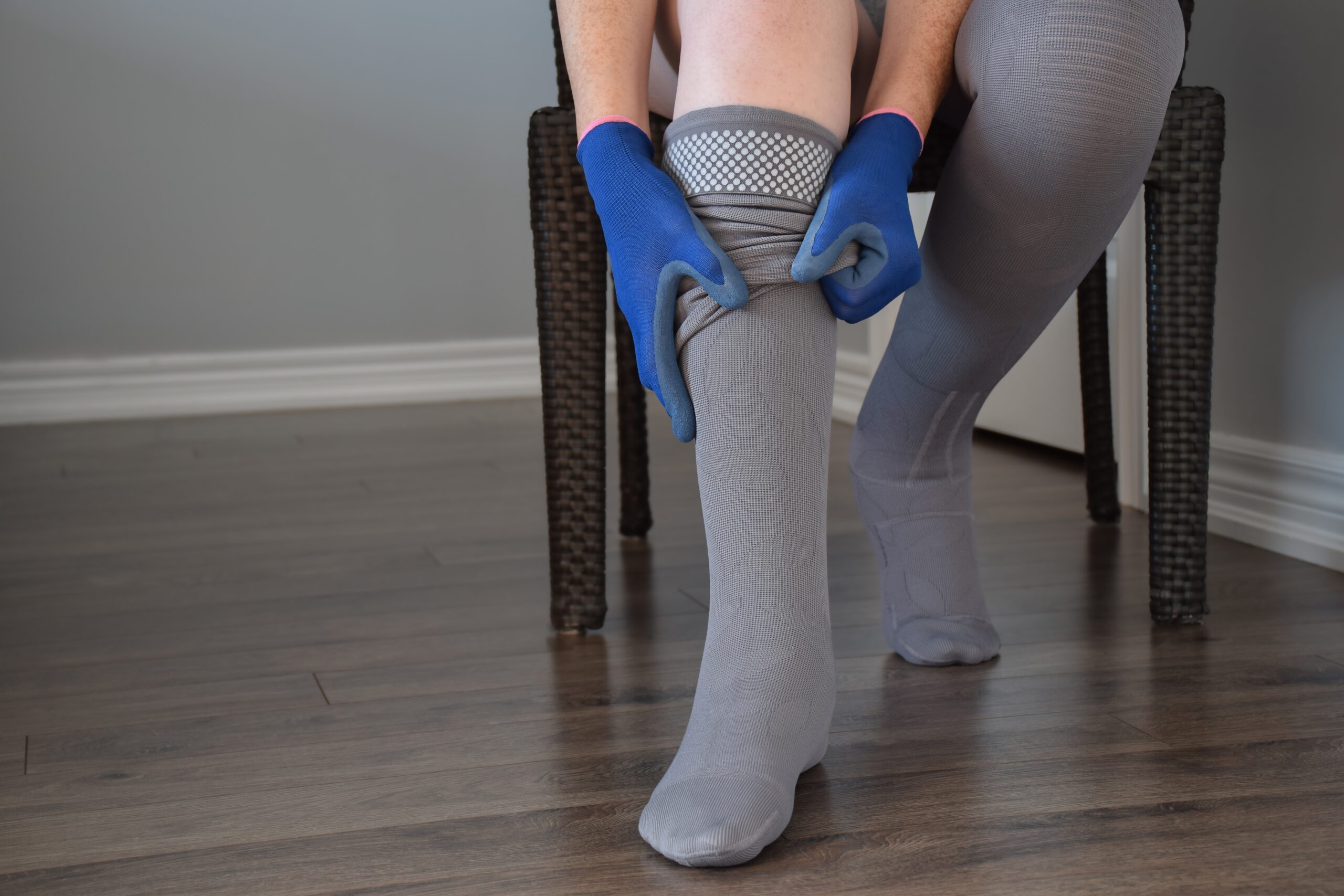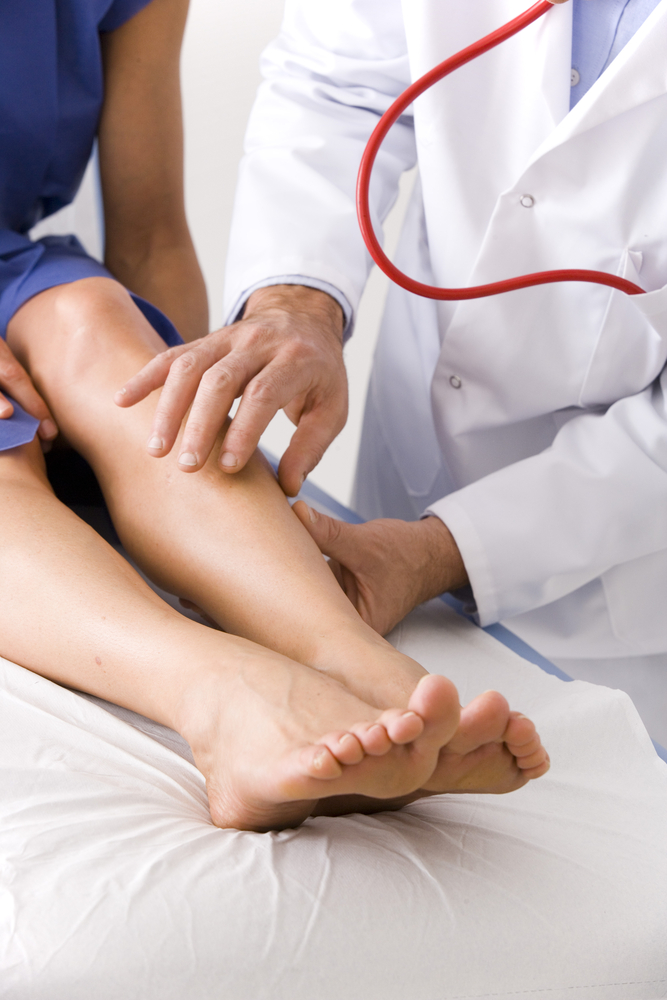
What is Skin Discoloration Caused by Vascular Disease?
Skin discoloration on the legs or lower body can be a sign of vascular disease or diabetes. Skin discoloration caused by venous disease results from veins that do not function properly. The skin may swell and turn blue, red, brown, or have pale discoloration. Some people report that their skin looks dirty even after taking a shower.
Also, look out for skin tone and texture changes, throbbing, itching, and hair loss on the legs. Contact your doctor if you have these symptoms because they could be linked to vascular diseases, like chronic venous insufficiency or deep vein thrombosis. Left untreated, skin changes from a vein disease can lead to ulcers and wounds.
Vascular skin discoloration can additionally appear as varicose veins or spider veins. Varicose veins may be red or blue and bulge. The surrounding skin may also be discolored. Varicose veins can be a severe health risk, so seek treatment immediately.
Spider veins are a smaller, milder version of varicose veins and pose no serious health risk.
The VeinSolutions teams in Flint, Michigan, and Lapeer, Michigan, can provide in-depth screenings for your venous conditions and an effective treatment plan.
Types of Skin Conditions from Vascular Disease
Discolored skin from lack of blood flow can manifest as many skin discoloration conditions. Some conditions are mild, whereas some are severe and require immediate treatment. Remember that other diseases cause skin discoloration too. Below are a few venous diseases and peripheral vascular disease discolored skin conditions.
Atrophie Blanche
After ulcerated or wounded skin heals, it may turn into white or pale discolored skin. Poor blood supply to the wound results in delayed healing and whitish atrophic scars. This type of pale discolored scarring on the lower leg or foot is extremely delicate and prone to becoming another wound.
Gangrene or Necrosis
Lack of blood and oxygen supply to the skin may cause tissue death. Patches of skin on or around the foot, ankles, or toes may turn black, accompanied by severe pain and numbness. Gangrene requires immediate treatment.
Venous Stasis Dermatitis
Pooled blood from venous insufficiency puts pressure on the skin and leads to redness and swelling of the ankles and lower legs. Itchy skin, tenderness, or yellowish-brown discoloration are additional symptoms.
Livedo Reticularis
Swollen blood vessels under the skin’s surface can create a net-like pattern of deep reddish or blue skin, also called mottled skin. This swelling happens when the blood vessels cannot drain properly. However, mottled skin can result from numerous other health conditions or simply a reaction to a cold environment.
Lipodermatosclerosis
When the layer of fat under the skin becomes inflamed, it can cause changes in skin color (hyperpigmentation). The first sign of lipodermatosclerosis is a pain in the lower legs and ankles. Because the condition is uncommon, the exact cause is unknown, though it may be linked to increased blood pressure.
Risk Factors For Skin Discoloration
Gender
Women go through changes in hormone levels throughout their lives. These changes can strain and weaken the vein walls. Women who have had multiple births are particularly at high risk because of hormonal changes.
Age
Those over 55 have a higher risk of developing blood clots. This higher risk is because our activity level decreases as we age, affecting our blood flow. Furthermore, collagen in our bodies breaks down with age, and vein walls are mostly made of collagen.
Obesity
In addition to an increased risk of stasis (stagnation of blood), obesity adds pressure to the legs and compresses the veins in the lower body. The strain damages blood vessel valves and reduces blood flow.
Immobility or Inactivity
Long periods of standing or sitting increase your risk because the lack of muscle contractions inhibits proper blood flow. The lack of blood flow increases the risk of venous disease and discoloration.
Poor Diet
Foods that are poor for heart health can also increase the risk of venous disease and skin discoloration. For example, a diet high in excess salt, refined sugars, and unhealthy trans fats can cause inflammation and affect blood flow.
Smoking
Smoking tobacco lowers oxygen levels because of the inhalation of carbon monoxide. Lower oxygen levels inflame and damage blood vessel walls, affecting blood flow and increasing the risk of venous diseases.

Skin Discoloration and Venous Disease Treatment Options
You can access many blood vessel and vein diagnosis and treatment options at VeinSolutions Flint in Michigan. Learn more about the options available to you at VeinSolutions.
- Vascular Surgery: In severe cases, a doctor may suggest removing the diseased section of the vein. The patient may be under general anesthesia.
- Radiofrequency Ablation: The doctor makes a small cut on your leg, then puts a narrow tube in your vein. The doctor uses this to inject radiofrequency energy into the vein, which heats its walls. The energy causes the vein to collapse, and the varicose veins dissolve.
- Endovenous Laser Ablation: A surgeon inserts a catheter into your vein. A laser is then threaded through the catheter and positioned at the top of the vein, which will heat the vein. This heat energy will seal it shut.
- Transilluminated Powered Phlebectomy: For the surgeon to see each vein, they need to make an incision to thread a light through. Then, the surgeon cuts the target veins and removes them through the incision with a suction device.
- Improving blood flow: A few at-home treatments and lifestyle changes can help ease vascular disease symptoms by improving blood flow.
- Compression stockings: Prescription-strength compression stockings support vascular health by encouraging blood flow up the leg and into the heart. The compression prevents blood from pooling and causing the legs to swell.
- Medication: A doctor may prescribe medicines that increase blood flow, like anticoagulants (blood thinners) and thrombolytics (dissolve blood clots). Medication may be in addition to compression therapy.

Schedule A Vascular Health Screening in Flint or Lapeer, MI
Get in contact with our highly specialized vascular doctors and surgeons at VeinSolutions. With multiple locations in Michigan, our team is ready to help ensure your circulatory health isn’t overlooked.
